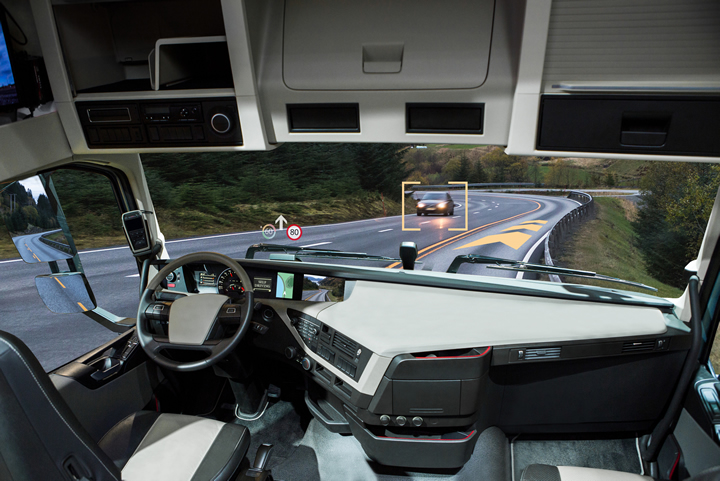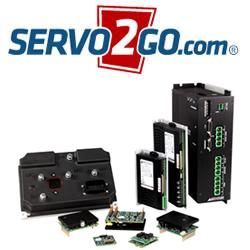Why Smart Fleets Are Betting on ADAS Before Autonomy Arrives

The race toward driverless freight has been both exhilarating and sobering. In the last year, industry heavyweights like Embark upped and vanished, TuSimple pivoted (dramatically), and even Waymo pulled back.
And yet, the vision goes on. Aurora and Kodiak are already running driverless freight on specified lanes (Level 4 on the SAE automation scale). Meanwhile, Volvo and others are taking an incremental approach, rolling out AI-powered driver-assist features (Level 1 and 2) that are delivering measurable safety and efficiency gains.
What’s emerging isn’t a straight road to Level 5 but a multi-lane playbook. There’s a grey zone (Level 3) that could change the economics of trucking long before autonomous trucks drive public long hauls. WeForum predicts that by 2035, autonomous sales will be creeping up, with the U.S. dominating mid-distance hub-to-hub routes. However, full deployment without limitations won’t be ready even for closed environments.
Although regulating the safe use of fully autonomous vehicles across jurisdictions and international routes still has a fair bit of ironing out to do, AT providers and OEMs are making stark improvements to the technology inside our trucks. Getting familiar with these tools now will be the lifeline that saves your fleet and your drivers when full automation does go mainstream.
What ADAS Brings to the Table
These are driver-assist systems, where the level of automation advances in correlation with the number. Benefits of Levels 1, 2, and 3 include a reduction in accidents and more fuel-efficient driving. For example, McKinsey recently reported that in China, Level 2 and 3 could further reduce the total cost of ownership (TCO) through longer acceptable shifts for drivers and the elimination of the need for a second driver per truck.
If we briefly compare each category, Level 1 offers one function at a time, such as adaptive cruise control (ACC), lane keeping, or automatic emergency braking (AEB). Level 2 combines these functions. It offers cruise control alongside lane centering, blind spot monitoring, and collision mitigation. At Level 3, the vehicle can handle driving tasks on its own without the driver’s constant attention, but the driver must be ready to step in whenever the system requests.
The bigger play here is data. Every ADAS-equipped truck is a rolling sensor hub. It generates the operational data you’ll need for predictive maintenance, smarter routing, and — when the time comes — seamless integration with autonomy packages. Fleet owners who get a lid on their data now will position themselves and their drivers for the next wave of automation.
How the “Grey Zone” Impacts Operations
Level 3 (the grey zone) uses automation that can handle most driving tasks, but a human must stay in the cab and take over if needed. A 2023 study in the Netherlands found that drivers foresee that reducing driving tasks with automation will eventually become a reality, but expressed concerns about job quality and satisfaction.
Platooning offers a type of Level 3 service where virtually connected trucks drive at short headways to save fuel and associated emissions. With progressing technology, we may see platoons with drivers resting while being in the truck. This is good for highway stretches, predictable routes, and long dwell times where fatigue is a risk.
However, drivers remain unsure of the technology's capabilities, fearing that their profession will become redundant and that it will interfere with the nicest part of their job — driving. Already, in ports across Europe, driverless terminal trucks (Level 4) are changing positions. Instead of four drivers, one remote operator monitors four autonomous trucks simultaneously, intervening only when necessary.
This technology is plausible in terminal settings since trucks move containers within a confined space, at slower speeds than on a highway, and often along fixed, repetitive paths. Whereas on public roads and uncontrolled environments, where other cars, motorcyclists, and pedestrians are thrown into the mix, agreeing on state and federal regulations is much more complex.
Level 3 offers a space where drivers stay in the cab and familiarize themselves with the emerging technologies as positions begin to shift. These systems aim to reduce incidents, improve utilization, and let drivers focus on logistics tasks such as planning, paperwork, and communication during lower-risk stretches.
Why Holding Out for Level 5 Could Cost You
Autonomous trucking isn’t a straight leap to Level 5 driverless operations; it’s unfolding in stages that are already reshaping fleet economics. Logistics leaders like Ryder and Werner are already at Level 4. They’re collaborating with AV providers to open AV transfer hubs and extending autonomous driving pilot routes to cover over 1,000 miles.
Before these major players entered the AV space, they fully equipped themselves with Level 1 and Level 2 systems, such as AEB and collision mitigation systems (CMS). Drivers also familiarized themselves with apps designed to assist with non-driving-related tasks such as managing truck stop fees, submitting receipts for reimbursements, and obtaining route information.
For fleet owners starting their autonomy journey, the opportunity is to capture the savings from Level 1 and Level 2 ADAS, use those gains to expand capacity, and reinvest strategically to be ready for Level 3 and Level 4.
ADAS tools provide the data points to better manage fleets and help prepare drivers for the next round of technology. Implementing telematics and cameras across AES Fleet’s nine Transit vans has curbed insurance by 10% in two years and running costs by 25%. Amey, with over 2,000 vans and trucks, boosted its miles per gallon by 12% and vehicle utilization by 25%, after investing in telematics, 360-degree cameras, and an auto-stop function for traffic management, among other safety measures.
Fleets that start now learn, train drivers, and create capital reserves, making the Level 4 leap smoother and cheaper later.
 Asparuh Koev has worked in the transport and logistics sector for more than two decades. Over the years, he has established several companies including Sciant, an engineering services company later acquired by VMWare, and IntelliCo Solutions, which delivers IT digitization for the transport industry. Koev co-founded Transmetrics in 2013 and, as CEO, he combines IT and domain expertise to grow a company that is bringing truly cutting-edge technologies to the sector.
Asparuh Koev has worked in the transport and logistics sector for more than two decades. Over the years, he has established several companies including Sciant, an engineering services company later acquired by VMWare, and IntelliCo Solutions, which delivers IT digitization for the transport industry. Koev co-founded Transmetrics in 2013 and, as CEO, he combines IT and domain expertise to grow a company that is bringing truly cutting-edge technologies to the sector.
Featured Product

